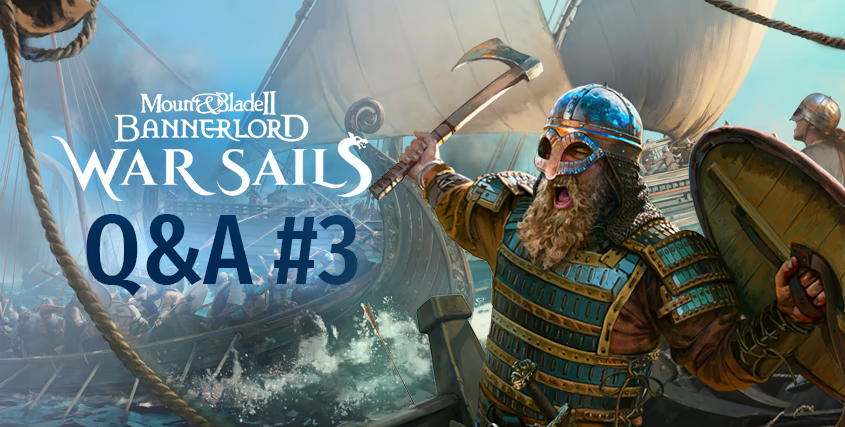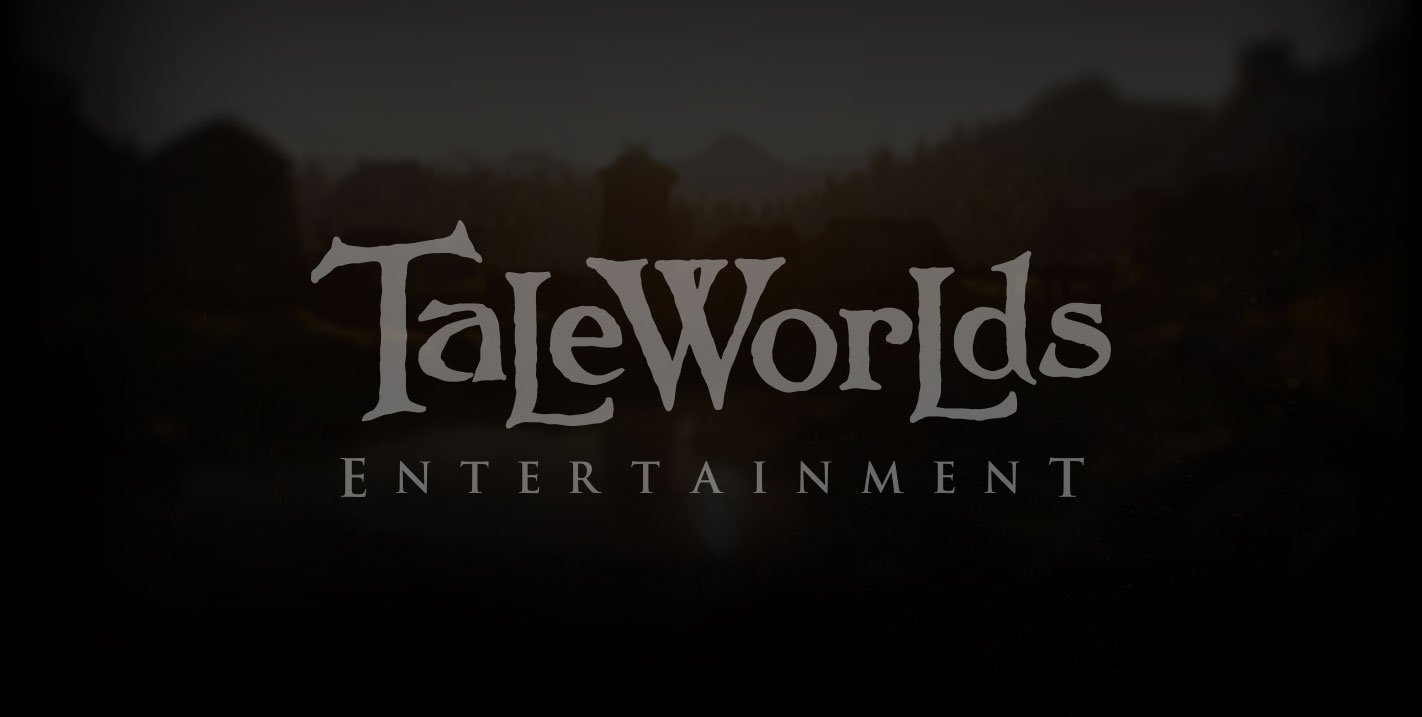War Sails Q&A #3

Greetings Warriors of Calradia!
Our “Setting Sail” dev blog revealed how the expanded map supports naval travel and the new Nord faction, and your questions quickly followed. Below you’ll find answers to some of the most common questions since our last Q&A.
Got something else you’re curious about? Drop your questions below — we’ll be picking some for the next Q&A!
General
Is the new expanded/changed map from War Sails also in the base game, or do you have two different world maps?
- There will be two separate world maps - the existing one for the base game and the new one for War Sails. The latter will contain changes relevant to naval gameplay and the new Nord faction discussed in our last blog.
Will bridges interrupt sailing on rivers?
- No, bridges won’t disrupt your naval voyage.
How many towns and castles will the new Nord kingdom control?
- Four towns and ten castles, though the exact number of castles may still change slightly as we balance the experience.
What food will the Nordic villages produce?
- The harsh environment of the North makes it harder to produce surplus grain, leaving the Nords to rely more on fish. Several villages across the map also had their production changed to accommodate the new Warlus Ivory and Whale Oil trade goods, as well as to boost fish yields, bringing them on par with grain as another staple food source of Calradia. All of these will introduce new trade opportunities in combination with naval voyages.
What will happen to the islands between the Aserai and the Empire?
- They will no longer be there in the War Sails map.
How will ships enter the Perassic Sea — due to the passage between Aserai and the Western Empire?
- To open the seas, some land also had to give way. Two major crossings — once narrow land bridges — have been removed. The southern corridor between Quyaz and Ortysia, and the northern pass linking Omor to Varnovapol. This allows for travel into two massive bodies of water, which would otherwise be blocked off.
When forming a naval army, does each party have to own and maintain its own ships, or can an army leader supply vessels for everyone?
- Each party is responsible for acquiring and maintaining its own ships. However, armies may set sail even if not all linked-up parties have ships, as long as some parties in the army have them. Additionally, a low ship vs troop ratio penalizes the army’s campaign movement speed.
- Shipless parties “on route” to join the army try to link up on land or move to the last known army embarking position if the army is already naval. Once the army disembarks, they attempt to link up via land again. Parties in this limbo state also take care of their urgent needs, like acquiring food or avoiding significant threats.
- The army creation menu contains information about which summonable parties have ships — allowing you to make informed decisions that impact your army’s effectiveness on waterways.
In the previous posts, you mentioned how horses take up inventory space on ships and do not provide a naval speed bonus. Does this apply to cavalry units, and will the AI have the same restrictions as the player?
- Yes, it includes both cavalry and horse archers. This system benefits factions like the Nords, who rely more on mariner troops, while limiting cavalry-heavy factions like the Khuzaits. The AI follows the same restrictions as the player.
Will we have a skill or a companion that can predict the storms?
- The Boatswain skill will reduce the negative effects, though the storms themselves aren’t predictable. These dynamic weather events will move across the sea and deal damage to ships caught in them. Players will be able to spot storms forming thanks to visual cues like dark clouds and thunder during a brief buildup phase. While you can’t forecast their paths, careful navigation and good ship stats can help you pass through safely or avoid them entirely.
Can you order your ships to meet you at a port while you're elsewhere, or do you need to be at the port before you summon them?
- You need to be at the port yourself — ships can only be summoned to the port you're currently in.
Will ships always have a fixed waiting time to arrive when summoned, or does it depend on how far they are from the destination port?
- Arrival time depends on distance, but it's shorter than regular travel time. Certain perks can reduce it even further.
If a town is captured while our ships are docked there, will we lose them? And does the same apply if enemy ships are docked when we take the town?
- No, ships will automatically leave the port when the town changes hands, regardless of who owns them. However, they will not be interactable — you will need to visit another port to summon them.
Do blockade-breaking naval battles take place in the port or open water? And near river towns, are river scenes used?
- They take place in coastal waters for seaside towns, and river battles are triggered for riverside towns.
How will the AI nobles decide whether to follow a land or naval path?
- For each journey, the AI will weigh a land-only route against one that uses waterways. It will compare their travel time — which is impacted by many factors like equipped ships, mounts, troop counts, inventory weight, etc. It will then estimate the damage the water route would inflict on the vessels. If the ships’ current condition (plus a safety margin for unforeseen trouble) can withstand that wear, the party will choose the route that includes water; otherwise, it will stay on land.
How and when will the AI nobles decide to acquire ships?
- AI nobles aim to maintain enough ships to transport their party efficiently, with many factors taken into account. When evaluating a suitable party ship composition, they will target to have a capacity that comfortably exceeds the maximum party troop size to allow for flexibility (like taking prisoners or losing a ship). On the other hand, they will avoid compositions with too large of a skeletal crew — to prevent movement speed penalties. They also prefer balanced ship compositions with light, medium, and heavy ships, and those that align with their own culture. For example, a large party might get one of each ship type before acquiring a fourth one, while smaller ones may field just one or two. In practice, this means AI parties favor type variety and slightly overcompensate to stay mobile, though they’re also mindful not to significantly impact their clan’s treasury with their ship purchases.
Why is the expansion coming only to current-generation consoles?
- War Sails makes use of several systems and improvements that benefit from the performance and capabilities of newer hardware. Focusing on current-generation platforms allows us to make design decisions that lead to a better overall experience across all platforms.
Besides the announced town and castle project changes to the base game, will there be any other adjustments to settlement income?
- Yes — tariff income has been significantly rebalanced to diversify town income sources. Previously, tariffs made up only a tiny fraction of a town’s income (around 2%), but they will now contribute about 30% on average and can reach over 60% in trade-heavy towns like Danustica. This change will encourage players to consider trade routes and town specializations more carefully, making settlement management and project choices more meaningful.
Modding
Will the .NET version used by the game (and server) executables be updated?
- We’ve experimented with newer .NET versions, and plan to continue during less busy periods.
Will the new XML editor announced for the base game also work with the War Sails DLC?
- Yes.

